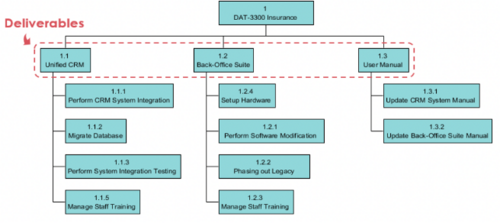Work Break Down Structure(WBS)
"Developed by Qian Xiao“
Contents |
Abstract
Work break down structure is a project management tool that breaking down complex project into phases, deliverables and work packages. A WBS can integrate scope, cost and deliverables into a single tool and provides the necessary framework for detailed cost estimating and control along with providing guidance for schedule development and control. The following article aims to provide an overview of the basic concepts of WBS, the preparation of creating a WBS, and discussing the three different use cases with WBS, finally analysis the limitations of using WBS.
Introductions of WBS
Work break down structure (WBS) is defined as: "Deliverable oriented hierarchical decomposition of the work to be executed by the project time to accomplish the project objectives and create the required deliverables.” by the Project Management Institute (PMI). For project, it is one of the most important project management tools that integrates scope, cost and schedule baselines ensuring that project plans are in alignment. And the project can be planned, executed, controlled, monitored, and reported effectively with this tool.
Elements of WBS
Work break down structure is made up of three elements, which are work, breakdown and structure.
- Work: tasks that can produce tangible results;
- Breakdown: a hierarchical structure of progressive subdivision and classification;
- Structure: organization of the sections according to a certain pattern.
Types of WBS
Here are three main types of WBS: 1) Deliverable-Based, 2) Phase-Based and 3) Responsibility-Based. And the main difference between the two approaches are the elements identified in the first level of WBS.
A deliverable-based work breakdown structure clearly demonstrates the relationship between the project deliverables (i.e., products, services, or results) and the scope (i.e., work to be executed). From figure 1(a), the level 1 elements are summary deliverable descriptions, while level 2 elements in each leg of the WBS are all the unique deliverables required to create the respective level 1 deliverable.
